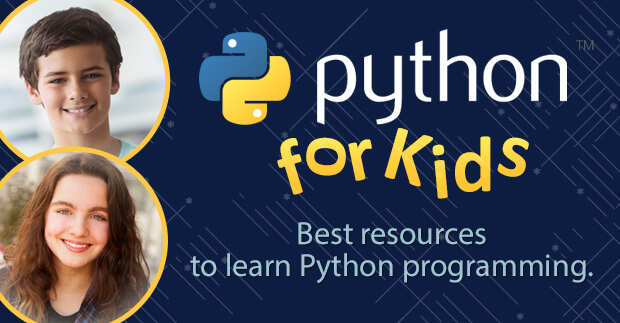What is a robotics club or team?
Robotics clubs and teams are an extracurricular way for kids to explore robotics in a more in-depth way outside of school. Why read about robots when you can build them with your own hands! STEM (science, technology, engineering, and mathematics) subjects are increasingly important for kids to learn. The benefits of a solid STEM education both prepare kids for daily life in an increasingly technological world and for their future careers. Some schools may include robotics in their STEM curriculum. However, it’s not very common and is often limited to only few days with simple projects.
Robotics clubs and teams are official extracurricular activities at a school or run by an outside organization. Some students may also run their own clubs with the help of an advisor.
Most robotics clubs meet 1-2 times a week, sometimes for an entire school year or for one semester or grading period. Kids learn about robotics and often work on hands-on projects together and study robotics topics, like coding and engineering. Depending on the size of the club, tasks are assigned to students individually or in small groups. Many robotics clubs are tied to competitions and meetings focus on preparing for different competition tasks.
What do kids do in a robotics club?
Elementary School Robotics Clubs (Ages 8-10)
Robotics clubs in elementary school typically focus on problem-solving and logical thinking. First, they should learn the basics about how the robotics system that they’ll be using works. Next, they’re presented with a problem to solve. That could be as simple as building a basic robot to creating a robot that does a specific task. This can be relatively simple, like asking the robot to follow a specific path.
Next, students are encouraged to use logical thinking to come up with a solution. They’ll need to solve the problem at hand and any problems that come up along the way.
Younger elementary students are eligible for some robotics competitions, but many robotics clubs tied to schools typically limit competitions to fourth and fifth graders. The majority of elementary schools use either VEX or LEGO system robots. These come with guidance on how to build different robots. Some elementary robotics clubs only involve building robots and not programming the robot. Those that do also involve programming the robots typically use a block-based coding language, similar to Scratch, that is often proprietary to the robotics system they’re using.
To prepare for competitions, students practice maneuvering their robots around a specific course and completing specific tasks. They’ll also be able to make adjustments so their robot can complete the course and tasks in the most efficient way possible. Then, each practice or meeting becomes a race to get a faster time. It’s also a problem-solving session to test out new adjustments to their robot.

Middle School Robotics Clubs (Ages 11-13)
Robotics clubs in middle school tend to focus more on competitions than those for elementary students. For those who don’t have previous experience with robotics, there’s still plenty of time to learn. However, the basics of how robots work and how to build and program them are typically taught within the skills needed for specific competitions. Middle school clubs still typically use VEX or LEGO robotics kits, but are more likely to involve programming the robot as well. At this age, they may program using a block-based programming language or a proprietary text-based language similar to Python or C++.
Just like elementary school competitions, middle school robotics competitions involve completing specific tasks around a specific course. Middle schoolers will be asked to complete more complex tasks and navigate around more difficult courses. Competitions at this age level also require students to design robots that can move autonomously in addition to being controlled by a driver. The autonomous part of the competition is where programming is really key, so students spend just as much time behind a computer during meetings as they do practicing with a controller and physically adjusting the robot.
High School Robotics Clubs (Ages 14-18)
Robotics clubs in high school often start to incorporate multiple kinds of robots, some tied to competitions and some that are not. Students in this age group can start to learn a variety of robotics systems and different ways to build and program robots.
For competitions, VEX is still very popular for both its robotics kits and its local, regional, state, and national competitions. However, high schoolers have competitions available to them where they can build a robot out of almost anything. These competitions require high-level construction, programming, engineering skills, and creativity. They’re also the closest students can come to robotics in the real world.
The vast majority of robotics competitions at the high school level require robots to complete more complex tasks autonomously, from recognizing shapes and colors to maneuvering around tight corners and obstacles. Python and C++ are the most common programming languages at this level. Mentors are especially important to help guide students and troubleshoot when problems arise.
Recommended: Robotics Kits for Teenagers
Is coding required for robotics?
While the simplest robots come pre-programmed to do a specific set of tasks, or are purely mechanical in their operation, the majority of robotics projects do require coding. Although there are a variety of different coding languages a robot might use, they all have the goal of programming the robot.
Coding is what tells the robot what to do to complete specific tasks. Since robots can’t think on their own, they are programmed very specifically. Kids will program them to move, make sounds, recognize shapes and colors, pick up items, etc.
The majority of robots designed for younger students are programmed using block-based coding. This allows students to drag and drop different coding blocks to program the robot. More complex robots, however, require using text-based programming languages. C++ and Python are two of the most common coding languages for robots at this level, with Python being the best option for students who are new to coding.
Kids who are already familiar with Python can have a head start when it comes to robotics. Python is a great programming language for beginners due to its simple syntax and is also highly in-demand for developers. CodeWizardsHQ offers online Python classes taught by live teachers for both middle school and high school students. These classes teach students the basics they’ll need for robotics and show them how to use Python to build apps and games.
Recommended: Coding Programs for Kids

Should your child join a robotics club?
There are many benefits for kids who join a robotics club, with the most obvious being the opportunity to strengthen their STEM skills. Robotics clubs combine technology, engineering, and in many cases math. With so many future careers focusing on STEM, robotics is a great way to give your child a head start.
Robotics also offers kids a different type of team activity besides sports. Students get to learn about teamwork, leadership, and social skills in many of the same ways as a traditional sports team. Kids who aren’t interested in sports, or who can’t play sports, will gain many of the same benefits through a robotics team.
Recommended: Free Coding for Kids
Popular Robotics Clubs to Join
There are a couple different national organizations that have robotics clubs throughout the country, which are a great place to start. These organizations also have competitions. It’s always worth checking with your child’s school to see if they have an after-school robotics club as well.
- For Inspiration and Recognition of Science and Technology (FIRST)
- VEX IQ (Middle School)
- VEX V5 (High School)
Robotics Competitions & Events
Many robotics clubs participate in one of the robotics competitions listed below, even if just at the local level. Bigger competitions may allow spectators to come watch in person or have recordings of past competitions available to watch.
- National Robotics Week
- Boosting Engineering, Science & Technology (BEST) Robotics
- Botball
- EARLY Robotics
- FIRST LEGO League
- FIRST Robotics Competition
- International Robot Olympiad
- National Robotics Challenge
- Robofest
- VEX Robotics Competitions
Recommended: Coding Classes for Teens
Resources to Learn About Robotics
Check out these resources below to learn more about robotics. You’ll find activities you can do with your kids to introduce them to robotics and gauge their interest, too.

